








Everyone experiences pain differently; that’s why there are experts who can help them according to their pain management needs.
It is estimated that up to 15% of the UK population suffers from disabling pain, so you are not alone. If you go to the doctor with a cough, you expect him or her to listen and examine you and perhaps perform some investigations. The causes of a cough can be simple and treatable or, potentially, the sign of something serious.
Pain is an evolutionary, protective sensation, which alerts us to possible harm. A simple back sprain may improve by itself or perhaps with some assistance from a physiotherapist. However, as pain becomes more persistent, a different approach is required; we then look for diagnosis and treatment. For some, the experience of chronic pain may itself become a problem because it becomes ingrained, and we then have to manage the chronic pain itself.
In addition to biological factors, psychological and social factors play a part in the causes and treatment of pain. That is, pain can be generated just as much from inflamed soft tissue or an arthritic joint as from psychological distress. Importantly, these factors interact. For example, high levels of distress may make the experience of persistent pain worse.
The UK boasts an incredibly rich legacy when it comes to healthcare innovation. However, adoption takes far too long, making it costly. To accelerate healthtech adoption, innovation officers should be appointed.
From the discovery of DNA’s double helix to the invention of the first Intraocular lens, this quest for pushing the boundaries of what is possible is matched by a world-class academic and research community. Add into the mix our strong regulatory pedigree and the fact that, in the NHS, we have the world’s largest single-payer healthcare system; and, unsurprisingly, the UK is a destination market for many innovators.

However, it is estimated that it can take up to 15 years for a product to be successfully adopted by the NHS. Given the vast majority of companies within the industry are small and medium-sized, this is far too long and costly an endeavour to be commercially viable. In an industry that is engineering-based and characterised by rapid, often incremental product design and development, we need to do things differently to recognise the enormous value and potential that healthtech brings.
The response to the pandemic did demonstrate, however, that the NHS can be as agile and fleet-footed as any other healthcare system in the world. Now, we must not only build on the lessons learnt but also strive to overcome some of the more systemic challenges that remain.
The British Pain Society has long recognised that no single health professional has all the skills to manage pain. As a Society, we come from a variety of healthcare backgrounds and use a variety of approaches to assess and manage pain. In short, we work together to assess and manage pain because we recognise there is no ‘one size fits all’ approach. Pain is an individual experience, and treatment has to be tailored to the individual.
Unfortunately, for many people, pain cannot be cured — but that doesn’t mean something can’t be done. The presence of even severe pain alone does not determine how it will affect your quality of life. If you can’t cure the pain, then it may be managed; for instance, through medicines and other interventions, as well as physical and psychological therapy.
What all pain clinicians aim to do is understand the causes giving rise to pain for an individual. Clinicians can work collaboratively with them to reduce the impact of pain and improve their quality of life.
Perhaps the biggest blocker to change is that innovation is nobody’s job. NHS Trust Boards see regular metrics — on finance and performance, quality and safety and workforce — with Executive Directors responsible for these important areas. But, with few exceptions, nobody at Board-level holds the portfolio for innovation. This is why ABHI is calling on every NHS organisation to appoint a dedicated Chief Innovation Officer whose role will enable hospitals to deliver efficiencies while adopting life-changing healthtech.
As part of each hospital Board, Chief Innovation Officers can make a fundamental difference to the NHS, while ensuring maximum value to the taxpayer. Until this is actively built into a senior job description, it is unlikely to become business as usual. Through such positions, they can help sustain positive pandemic response innovation, help build an early diagnosis culture and fundamentally ensure that innovation is encouraged for the benefit of patients, the NHS and the wider UK economy.

Perhaps the biggest blocker to change is that innovation is nobody’s job.WRITTEN BY Jonathan Evans Director, Communications & Events, ABHI WRITTEN BY Dr Rajesh Munglani Consultant in Pain Medicine Vice President, British Pain Society
In addition to biological factors, psychological and social factors play a part in the causes and treatment of pain.
How robotic-assisted surgery is transforming cancer treatment in Wales
Surgeons can exercise control over a robotic arm to perform minimally invasive keyhole surgery. Equipped with cameras and surgical instruments, this technology enables intricate procedures through small incisions, with heightened accuracy due to precise controls.
Making robotic-assisted surgery available Wales is driving the integration of these surgical systems through a pioneering national programme with partner collaboration at its core. The All-Wales Robotic Assisted Surgery Programme hosts Health Boards across Wales, working closely with industry supplier CMR Surgical, to increase the availability of advanced technologies and techniques for precision surgery.
Life Sciences Hub Wales played a pivotal role during the initial phase of this initiative. Efforts focused on developing the National Business Justification Case, which helped secure approval and funding from the Welsh Government. Cardiff and Vale University Health Board and Betsi Cadwaladr University Health Board now have the Versius surgical robot available for procedures across colorectal, upper gastrointestinal, urological and gynaecology specialities.

Wales is now becoming a beacon for pioneering robotic-assisted surgery. It’s starting to bring new training and recruitment opportunities, as specialist staff are welcomed to learn and practice. Since its launch last year, over 185 patients have been treated. Eight active surgical teams are involved and 70 staff have been trained.
Expanding to improve cancer outcomes


Paul Mears, Chief Executive of Cwm Taf Morgannwg University Health Board, says: “This is an exciting opportunity to provide cutting-edge, minimal access surgery to our patients. Robotic surgery allows our surgeons to operate with even greater precision and visual acuity, improving cancer outcomes while reducing postoperative pain and length of hospital stay. Our health board is proud to be part of this innovative programme.”
in contact
Get

Artificial intelligence is nothing new. The term was used for the first time in 1956 by John McCarthy. However, AI development was slow due to a lack of computing power and availability of data. As computing power and data volumes have grown at exponential rates, AI adoption has followed.
For many years now, health information has been collected in a digital format, accounting for petabytes of data. However, this data has not been used to its full potential. This is primarily due to unstructured information consisting of different types of data: medical imaging, physician notes, genomic sequences, etc. There was no easy way to sort this data and extract valuable information from it. Artificial intelligence (AI) and machine learning (ML), including generative AI (GenAI), are now proving to be the solution to this problem.
AI enables automation in telehealth tools
The use of AI in healthcare is not a new phenomenon, with some of the earliest work dating back to the MYCIN project in the 1970s. However, the Covid-19 pandemic acted as a catalyst to accelerate adoption and drive innovation. Automation is inextricably associated with AI, and telehealth is one of the first areas in the health sector to be assisted by AI. This includes the process of setting up appointments or talking to a virtual nurse assistant through chatbots (chat robots) or voicebots (voice robots).

Utilising chatbots for efficient communication
Chatbots allow patients to talk to a computer using natural language, either through typing or AI-powered voice recognition and voice transcription. Natural language processing (NLP) converts this text into commands understandable for computers, which they can process. With voice generation
(text-to-speech), they can also answer questions. As a result, patients no longer have to queue for an hour to set up a doctor’s appointment. With AI-powered voicebots, setting up appointments is now instant. There are more functions that harness voicebots. Patients can even get initial advice from a ‘computerpowered doctor.’ A voicebot can ask them about their symptoms and, in many cases, the computer can run a triage to provide helpful information or suggest visiting a doctor.
Examples of ML detecting Covid-19 and cancer
During the pandemic, scientists at Massachusetts Institute of Technology (MIT) devised a machine learning system that was able to analyse specific features in a patient’s cough to determine if they may be an asymptomatic carrier of Covid-19 and should confirm with a formal test. Another example is image recognition (also known as computer vision), which is possible with deep learning (a subset of ML). Computers can now analyse radiology images to identify a narrow range of specific conditions, such as blood clots in the lung arteries (pulmonary embolism) or cancers with up to 99% accuracy. While they can do it thousands of times faster than a human, these results require ‘expert in the loop’ clinical validation from trained radiologists.
AI enables democratisation of access to care and early detection
AI also helps enhance the operation of ultrasound devices, meaning less training is needed, by aiding in interpreting captured images and ensuring more consistent
measurements. All this significantly improves the early detection of potential diseases, which has the potential to save thousands of lives, especially in areas where specialist skills are less available.
Patients can even harness this technology on their own. SkinVision, a Netherlands-based company, developed a solution for detecting skin cancer at an early stage. By taking a photo of a concerning skin lesion, patients can utilise a deep learningpowered solution to determine whether it is benign or potentially malignant. In such cases, patients are directed to seek medical attention for further evaluation.
Application across various healthcare fields
AI is used across medical imaging as well as other data types, including text, audio and genomics. This drives automation of clinical processes (for instance, diagnosis) and administrative tasks (such as scheduling).
According to the World Health Organization (WHO), there is a one in a million chance of a person being injured while travelling by aircraft. In comparison, there is a 1 in 300 chance of an individual being harmed throughout the patient journey. Prior research has shown that up to 50% of all medical errors in primary care are due to administrative reasons. The global shortage of medical professionals further compounds these problems. The WHO also estimates a projected shortfall of 10 million health workers by 2030, mostly in low and lower-middle-income countries. This makes it increasingly challenging to provide care to everyone in need.
It is AI in administrative tasks that is likely to have the most immediate impact on patients, as it can make every step of their journey smarter, not only scheduling through chat and voicebots. By analysing patient admissions, discharges and hospital capacity in real time, providers can concentrate care on the most critically ill patients. Systems are being built that detect patient deterioration and automate the follow-up of urgent or unexpected findings.
There is also a great potential benefit to care providers themselves. Through process automation in the provider workflow, specialists will be able to focus less on paperwork and more time on direct patient care. Enabling care providers to work ‘at the top of their licence’ improves efficiency of the system and personal job satisfaction.
The biggest turning point is the availability of Generative AI which is a subset of deep learning. Traditional machine learning models required labelled data to train their neural networks which restricted their area of usage. In comparison, GenAI is powered by so-called foundation models trained on unlabeled data. GenAI not only can generate text or images — it can also extract information and summarise it; this is the most important aspect for healthcare. Vast amounts of disparate data mentioned before can finally be sorted, structured and indexed. It now turns out this information is priceless for the healthcare sector.
Generative AI can unify images, clinical notes and conversations. It also identifies similar patients for information on therapies and clinical trial enrolment. It helps to prioritise patients needing immediate treatment. It also reduces manual burden with intelligent document processing. But these are just some basic examples of the potential of GenAI. The more advanced examples include disease gene prediction and protein design for drug discovery. We already experienced the power of technology when Moderna was able to prepare their vaccine for Covid-19 in just 65 days thanks to AI.
GenAI will not only impact the care of individuals; it can also analyse population-scale data. Genomics England is using machine learning to integrate and explore connections between genetic sequences, imaging and clinical history in the UK as part of their Cancer 2.0 programme for multi-modal data. Also, pharmaceutical companies are working with GenAI to identify similar patients (cohorts) who may be suitable for therapies, clinical trial enrolment and prediction of therapy response.
Who can make use of GenAI?
Until recently, AI was used only by machine learning experts who were able to write code and build pipelines from scratch. One benefit cloud computing brings is that specific ‘services’ can be incorporated into applications that enable data scientists (rather than ML experts) to automate some of the data processing that is required.
In the case of Amazon Web Services (AWS), the ‘Sagemaker Studio’ accelerates time to build new AI applications, and there are specific tools (Sagemaker Jump Start and Bedrock) that can accelerate the utilisation of a range of foundation models (FMs) from Amazon.com and third-party providers. In the future, there will be hundreds, if not thousands, of FMs; therefore, democratising access to the widest possible selection of FMs is imperative to provide choice for users.
AI aids professionals and helps cut costs Importantly, AI is not going to replace human physicians or nurses. It simply helps them to automate tasks and run many of them hundreds of times faster than before. It also helps significantly reduce costs, especially administrative costs, which are now estimated to be around one-third of all spending on health in the US — twice as much as the US spends on caring for cardiovascular disease and three times what it spends on cancer care.
The health sector is in the middle of one of its biggest transitions ever. Systems are digitalising, and we must understand what this involves well enough to fully engage in shaping the future of our care.
Slowly but surely, the delivery of healthcare is evolving to harness the use of data and digital technologies. This can better empower people to self-manage their conditions, improve efficiency in the delivery of care and ease capacity constraints. However, deploying new technologies is just the tip of the iceberg; achieving truly data-driven healthcare will require a significant overhaul for health systems and healthcare professionals as they leave behind decades of paper-based processes.
Involving all stakeholders
A comprehensive, system-wide approach is needed. It must draw on insights from all relevant actors within the health system: patients, clinical teams, administrators and regulators. They must all have the digital literacy to fully participate in discussions, planning and implementation of digital health systems.
The growing emergence of cloud technology is a perfect illustration of why taking such a multi-stakeholder approach is essential. Many fields, such as genomics, already utilise huge computational power and speed far beyond the capacity of ordinary computers, having migrated their digital processes to cloud-based technologies. These once-discrete domains no longer belong to one scientific speciality but are the result of a convergence of experts in genomics, pathology, diagnostics, AI, data analysis and epidemiology.
Gaining trust and autonomy
Both clinicians and patients need to understand how to operate self-monitoring tools such as wearables and mobile apps. They must be comfortable working with electronic health records, digital communication and data protection policies.
The everyday understanding of privacy policies and data protection will also help patients and clinicians to have confidence in the secure sharing of personal health data for diagnosis, treatment and research. Conveniently, certifications exist to verify whether different technologies have met industry standards, and compliance can be built into platforms’ functionalities.

Utilising tech in a meaningful way
What we need now is a concerted effort to instil a better understanding of digital health beyond IT experts — among patient advocates, healthcare professionals, policymakers and the wider public. These decision-making groups must be fully informed about what new technologies mean to meaningfully shape policies around their use and ensure that digitalisation is undertaken with the priorities and needs of the public at heart.
While adoption of AI in healthcare is undeniably complex, AI has the potential to tackle some of the NHS’s most pressing issues.
There has been an explosion of interest in artificial intelligence (AI), in part due to large language models, such as ChatGPT. As the innovation arm of the NHS, the AHSN Network is engaging in the early adoption of AI in healthcare.
Although the need for transparency about the algorithms used, the datasets they’re modelled on and how the technology performs in real life — with good reason — add to the complexity of adopting innovation into the NHS, there are several examples of where AI is already having an enormous impact and delivering benefits for clinicians and patients.

An innovation identified by Network colleagues in south London uses ambient voice technology (AVT) to capture patient-clinician interactions in real time, automatically creating a summary of key points that can be added to patient records. If utilised, with consent, across the 1.75 million daily patient appointments, this would save thousands of clinical hours and dramatically change the capacity of the NHS.
Identifying eligible patients with imaging decision support
Increasing the number of patients receiving mechanical thrombectomy (MT), where a blood clot is removed from the artery through a catheter, is a key NHS priority.
Network colleagues in Oxford are evaluating AI brain imaging technology e-Stroke, for speedier detection of stroke patients suitable for thrombectomy and have, so far, supported the spread of the technology across 73 hospitals. Here, detection rates have risen from 1.5% to 8%, compared to the overall national figure of 2.9%, leading to more rapid lifesaving treatment of stroke patients and resulting in the prevention of stroke-related disability and death.

Prioritising those most in need with risk assessment tools
A trial of a risk-stratification system, created by C2-Ai, one of the AI specialist companies supported by our Network colleagues in the northwest of England, found it accurately predicted the risk of mortality and complications for patients listed for planned surgery and reduced emergency admissions by 8%. It also helps hospitals identify up to 90% more harm than current processes.
Bringing AI into the NHS at scale
Whether it’s tackling long waits for treatment, improving diagnostic accuracy or saving clinical time, we are excited by the potential that AI provides to transform the experience of clinicians and patients across health and care systems — and we will continue to support and drive the identification, evaluation and adoption of these innovations at scale.
Healthcare professionals are responsible not just for treating their patients but also for building systems that are smart enough to improve the healthcare economy and the patient experience. Jordi Cusidó, Global Head of Research & Innovation at Top Doctors, highlights some critical areas of impact.
Easier access to patient records

Cusidó points out that having a centralised yet secure system can streamline patient access to their own health records. This is crucial for continuity of care, particularly for those who move cities or switch healthcare providers. The cloudbased AI platform aims to fill this gap by collecting and securely storing patient data.
Enhanced decision-making through AI
Platforms like Mona and Global EHR utilise AI algorithms not just for administrative functions but also for clinical decision-making. This is revolutionary as it can drastically improve patient outcomes. For instance, in remote locations, telemedicine can be facilitated for timely and expert intervention — potentially saving lives.
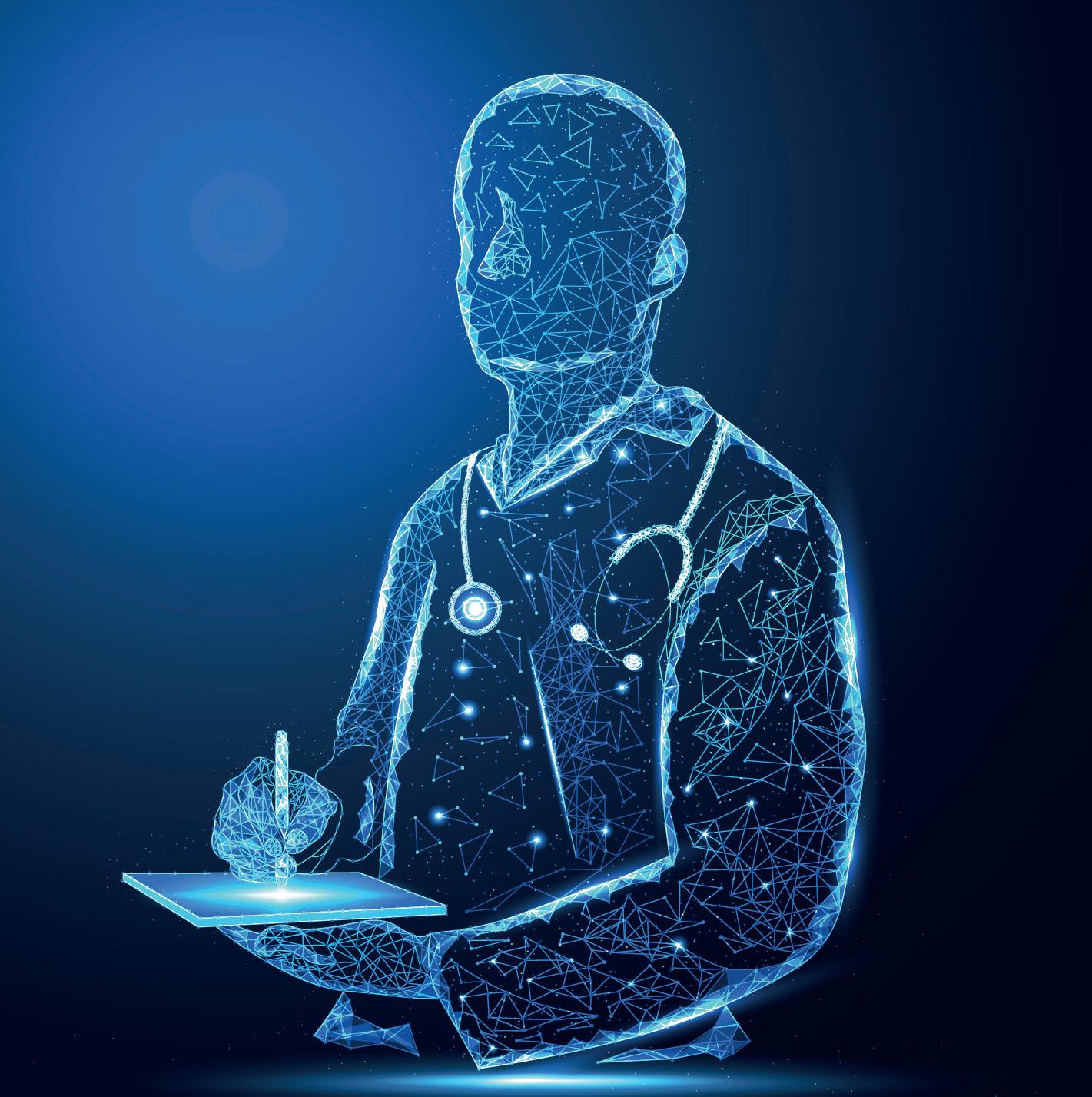
Security and interoperability
“Data can be stolen or hacked, so it is vital that everything is correctly anonymised and ready to be shared in a secure and appropriate way,” says Cusidó. Cybersecurity incidents
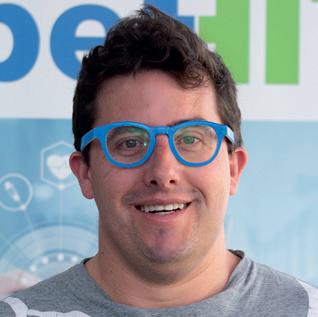
Patient choice is more than just selecting the best healthcare professional; it’s also about healthcare providers connecting properly. Hospitals are exploring how AI-driven technology can help improve patient support.
can be costly, with the average data breach in healthcare costing around $7.13 million in 2020, according to ‘The Data Breach’ report from IBM. Enhancing data security can result in significant savings.
Cost-effective administration
“We have a booking system that is costeffective in reducing administration time and reducing absenteeism,” he says. Even if we conservatively estimate a 10% reduction in administration time across 2,500 clinics, the cost savings could be substantial, potentially amounting to tens of millions annually.
Personalised medicine could lead to more effective treatments and shorter hospital stays, contributing to further cost savings and better patient outcomes.
Improved drug adherence
“A total of 70% of pharmaceutical costs come from drugs not being taken correctly,” Cusidó states. “If Avatar can even make a 5% dent in this number, that can translate into billions in savings globally, given the hundreds of billions spent on pharmaceuticals annually.”
Avatar provides 24/7 pharmacist assistance for patients, reducing waiting times for health services. It is a conversational AI based on
large language models, providing information on medical records and procedures.
Enhanced patient experience
“The Avatar technology has changed the way the public interacts with healthcare ... We call this the personalisation of medicine,” says Cusidó. While hard to quantify, personalised medicine could lead to more effective treatments and shorter hospital stays, contributing to further cost savings and better patient outcomes.
Revenue generation
“AI development, by opening new revenue models, means clients can profit from their own data securely — whether with pharmaceuticals or clinical studies,” he explains. This could generate millions in additional revenue, enhancing the financial sustainability of healthcare systems.
Future implications
“Better connectivity between healthcare systems is the next step,” Cusidó adds. Improved interconnectivity could streamline operations across hospitals, reducing redundant tests and procedures and thereby saving millions.
By putting hard numbers and impactful quotes together, the case for modernising the healthcare economy becomes even more compelling. It’s not just about significant cost savings and revenue opportunities but about potential improvements in patient care.
A knee brace has been specifically designed to ease pain caused by osteoarthritis, a condition that afflicts millions of people — helping them to lead normal, active lives.
Osteoarthritis (OA) is the most common type of arthritis in the UK, affecting about 8 million people. Among the most affected joints are the knees. Giles Leeming is the Senior Clinical Specialist for Össur Academy, a global Prosthetic and Orthotic company that develops non-invasive mobility solutions.


Knee brace for unicompartmental osteoarthritis
Unicompartmental OA affects the cartilage within the knee joint. There are two surfaces in the knee — medial and lateral sides— that take the load when you are standing. Giles says an unloading knee brace can manage pain in OA patients. Össur’s Unloader® One X has been specifically designed for OA sufferers. It features a unique, patented and clinically proven ‘3-point Leverage System’. It is lightweight and easy to wear.
Lasting support for osteoarthritis patients
The brace is designed to address the loads that go through the knee and isn’t just for temporary relief. “Historically, if you went to the doctor, the mainstay of treatment for arthritis and associated conditions for the knee has been pain medication.”
“While this is very effective and a good part of treatment, it is only addressing the symptoms and affecting the perception of pain rather than changing the mechanical reason as to why the pain is there.” With proper use, it can allow patients to live more freely and do activities that the osteoarthritis would normally stop them from doing.
Runner and user of the Unloader One X, Alan Henshall, completed the Liverpool half marathon this year. He shares: “If it weren’t for these knee braces, it is a certainty I wouldn’t be running at any level — let alone a half marathon. My braces allow me to carry on with the activities that I love doing, like running, even with the osteoarthritis and meniscal damage in my knees.”
It’s important to note that the Unloader One X should be used as part of your overall treatment pathway including exercise, physiotherapy and lifestyle changes to gain the best possible outcome and delay or even prevent the need for knee surgery.
Scan the QR code or visit: ossur.com/en-gb/oa-knee-pain

Ten million people in the UK live with osteoarthritis, although only half are diagnosed. One in two of us will experience the condition in our lifetimes, with 350,000 people newly diagnosed each year.


Osteoarthritis occurs when the body can no longer properly maintain and repair one or more joints, which causes the cartilage to become thin and uneven, leading to pain, stiffness, swelling and deformity in the joint. Arthritis isn’t an inevitable part of ageing, and joints are not like car tyres destined to wear down and be replaced; they are made of complex living tissue that our bodies constantly repair and maintain.
The pain and fatigue of osteoarthritis can dominate significant aspects of life, including mental, financial and social wellbeing. Treatment focuses on things people can do for themselves, such as being more physically active or maintaining a healthy body weight, which can be difficult.
Medicines for osteoarthritis include tablets and creams to help with pain and steroid injections, which often only provide short-term improvement. If these measures are not helpful enough, then surgery can be an option, including total joint replacements. While this is usually very effective, it is not suitable for everyone and is only recommended for people with severe pain.


We need better treatments to prevent, detect and treat osteoarthritis quickly and accurately. Versus Arthritis is funding research that will help develop
viable treatment options, help clinicians spot osteoarthritis faster and offer vital support sooner to prevent the debilitating pain and disability of this condition.
Researchers, such as Dr David Wilkinson, are improving our understanding of the condition and aiming to develop new treatments. Dr Wilkinson is studying the way the cartilage — a smooth cushioning substance that coats the ends of bones — becomes thinner in osteoarthritis. This loss of cartilage is an active process driven by enzymes called proteases. He is looking at which proteases have the most important role to play in these joint changes, hoping that they can ultimately be targeted with new therapies.
The process of cartilage loss in osteoarthritis is an active one, which gives us hope that something can be done to stop it in its tracks or at least slow down its progression. Versus Arthritis will continue to invest in research to allow everyone with arthritis the opportunity to live the life they choose, with real hope of a cure.
WRITTEN BY Deborah Alsina MBE, CEO, Versus Arthritis




Developing osteoarthritis treatment to help improve physical health and wellbeing
We need better treatments to prevent, detect and treat osteoarthritis quickly and accurately.
Advanced bracing solution takes the load off osteoarthritic knee joints

Patients with arthrofibrosis — a debilitating condition characterised by excessive scar tissue around the knee joint — suffer from loss of motion, stiffness and sometimes significant pain.
Arthrofibrosis (commonly known as stiffness) poses challenges in treatment, as conventional physiotherapy typically falls short, offering limited appointments. Home exercises lack the necessary intensity required to break down dense scar tissue, the cause of the problem.
Knee device for severe stiffness and pain
Dr Sara Aspinall, a specialist knee physiotherapist, has introduced a groundbreaking solution for knee replacement patients suffering from stiffness. Her innovation offers hope to the approximately 20% of knee replacement recipients who are left dissatisfied.

Dr Aspinall’s research has led to the development of the STAK (SelfTreatment Assisted Knee) — a medical stretching device designed to empower patients with high-intensity stretching that can be performed in the comfort of their homes. This novel approach restores the knee’s range of motion and enhances overall quality of life.
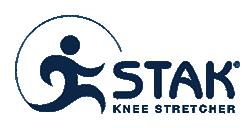
Improving range of motion
In an eight-week clinical trial published in the Bone & Joint Journal, patients using the STAK achieved a remarkable 30 degrees increase in range of motion on average, compared to just 8 degrees for those receiving standard physiotherapy. When the standard treatment group incorporated the device for an additional eight weeks, they saw an additional mean increase of 20 degrees.
Feedback from professionals
The device has earned widespread praise from leading surgeons, physiotherapists and patients throughout the UK. Professor Robert Ashford, from UHL NHS Trust, describes it as: “A simple yet
highly effective daily routine with really excellent functional results.” Fellow consultant orthopaedic surgeon Steven Godsiff lauded it as a: “Fantastic, low-cost and highly effective alternative treatment.”
Liz Jacobs and Jack Codd, knee specialist physiotherapists at the Royal Devon and Exeter Hospital, highlight the device’s user-friendliness and convenience. “Patients can control the stretch intensity, track their progress, ensuring a safe, effective and motivating rehabilitation process.”
Professor Andrew Toms, National Clinical Lead for Revision Knee Surgery, highlights the importance of addressing stiffness in knee replacements. “Our role as surgeons, physios and researchers is to keep innovating to help solve this difficult multifactorial problem. The STAK tool gives us a new approach and has the advantage of being an active technique, with a prolonged flexion stretch.”
Benefiting patients with severe knee stiffness
Sara explains: “Patients report immediate benefits, with increased mobility and comfort after their initial session.” Gillian, 67, shared after her first session: “It feels as if I’ve loosened something off, and I can bend my knee more already!” Rhiannon, 73, expressed joy after four weeks of treatment: “I’m really happy I’ve got back to full life, and I feel 10 years younger.” With this device, there is hope for a pain-free future for patients who have endured the challenges of stiffness for too long.
For those waiting for a joint replacement or similar procedure, here are some tips to help you manage your pain while you are waiting.
The latest Government figures show that over 800,000 people are on orthopaedic waiting lists, with 25% of these awaiting an operation. Living with joint pain and stiffness is challenging. The symptoms significantly limit your ability to take part in simple activities and reduce your quality of life; it can seem impossible to climb a flight of stairs or make a simple meal.
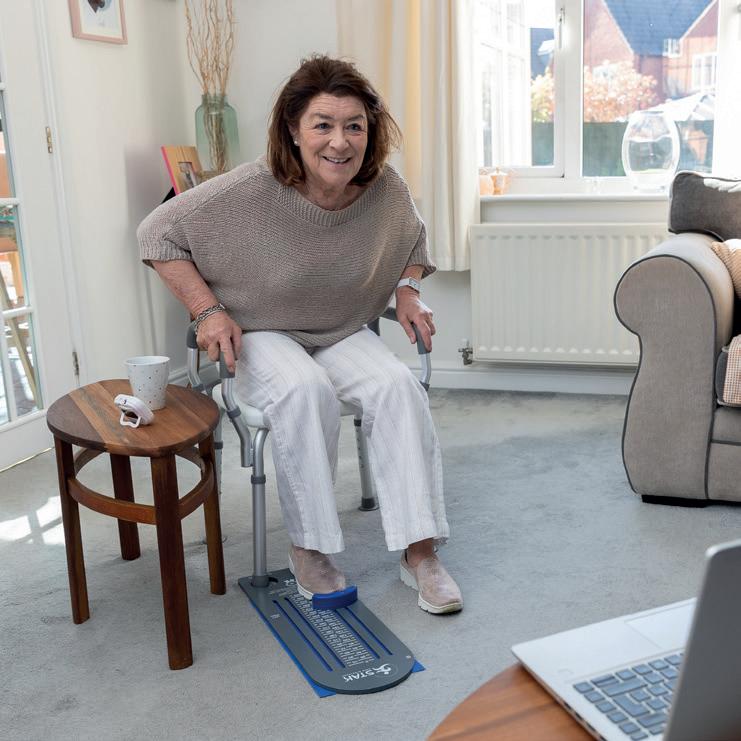
Follow recommendations and move in moderation

Firstly, your GP should offer guidance on pain management strategies that align with your specific condition and medical history. They may recommend certain medications, physical therapy exercises or other interventions tailored to your needs. Overall, moderation in all things is the key to controlling your symptoms. Do exercise in moderation but also take simple analgesics, and remember that relative rest from painful activities is sensible.
Take the right medication
Simple pain relievers or non-steroidal anti-inflammatory drugs (NSAIDs) help with mild to moderate joint pain. However, do follow your doctor’s advice/packet information regarding dosage and duration. Be mindful that there can be side effects.
Hot and cold therapy
joint can provide temporary relief. Cold packs reduce inflammation while hot packs or warm baths help relax muscles and ease stiffness.
Engage in gentle exercise
It’s important to keep mobile, so low-impact exercises like swimming, walking or stationary cycling are helpful and don’t strain joints unnecessarily. They reduce fatigue and make it easier to walk a little further or a little longer.
Manage your weight
Adopting a balanced diet and maintaining a healthy weight is crucial, as excess weight exacerbates joint pain.
Practice mindfulness
Practices such as meditation, deep breathing and mindfulness help manage pain by promoting relaxation and reducing stress. Activities that keep you mentally busy distract you from the physical discomfort.
Seek emotional support
WRITTEN BY Angelica O’Toole
Applying heat or cold to the affected
WRITTEN BY Deborah Eastwood President, British Orthopaedic Association
Dealing with joint pain and the wait for surgery can take an emotional toll. Get support from friends, family or a mental health professional to manage anxiety and maintain a positive outlook. The charities Arthritis Action and Versus Arthritis have a wealth of information on their websites. They also highlight local support groups that can help.
You can find more resources on managing your pain while waiting for surgery on the BOA website at boa.ac.uk/patients
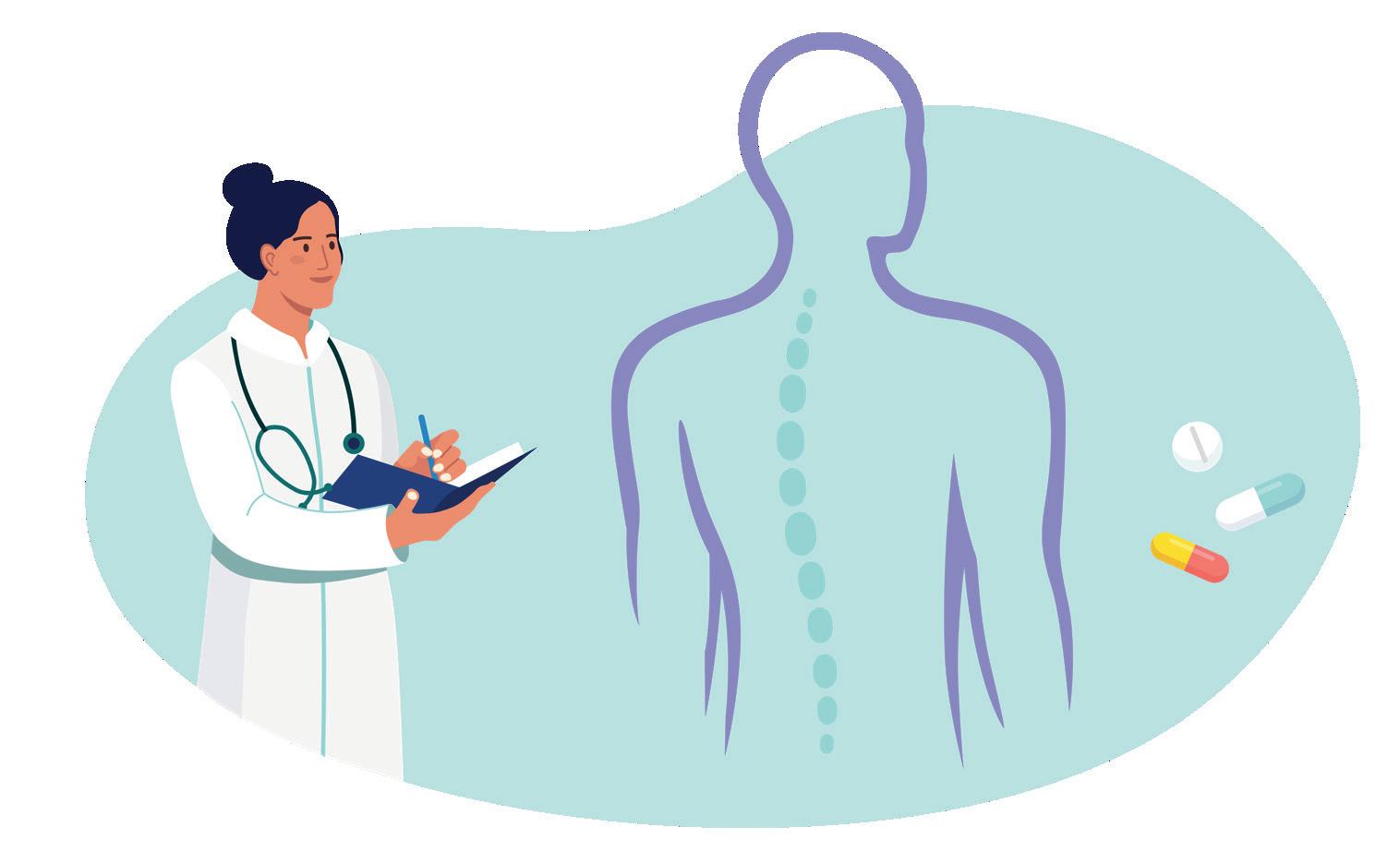

A device to relieve severe lower back pain effectively helped a patient who says it enabled her to return to marathon running.
Just over a decade ago, Kate Riley had a busy job and vibrant social life and ran marathons. That came to a halt after she developed a kidney problem, which did not respond to antibiotics and resulted in nerve damage — leaving her with severe lower back pain. “It literally changed my life. I could not do anything I wanted to do,” says Kate, 36. “Running was out of the question. I could just about walk, but I was in ridiculous amounts of pain.”
Navigating the pain pathway
An electronic implant is bringing relief and improved muscle function to long-suffering back pain patients as evidence reveals some are now virtually pain-free.
Dr Simon Thomson Consultant, Pain ManagementRestorative neurostimulation is an emerging therapy for multifidus dysfunction, a primary underlying cause of chronic mechanical low back pain. According to Consultant Dr Simon Thomson, Consultant in Pain Medicine at Mid and South Essex NHS Foundation, it is having a major impact on sufferers by treating the underlying cause of their low back pain, not just managing their pain or treating their symptoms. “The effects, I would say, are profound; in many cases, patients who had years of chronic back pain are now virtually pain-free.”

Implant gives more than just back pain relief
Dr Thomson is an expert in spinal cord stimulation who founded the Neuromodulation Society of the UK and Ireland in 2000. For the past five years, he and his research colleagues have provided clinical evidence that underpins this new therapy.

ReActiv8 — produced by Mainstay Medical, a global medical device company — is a revolutionary device that consists of a small electronic implant designed to interrupt the cycle of low back pain and is controlled twice daily by the patient. Rather than just covering up symptoms, ReActiv8 addresses the underlying cause of back pain by improving the function of the multifidus muscle.
Dr Thomson explains: “Often, those of us who treat pain are criticised by colleagues for not having the sort of copper-bottomed evidence base; but with this, we are doing really well. We have conducted a sham-controlled
randomised study. We also have a new clinical effectiveness study coming out, which will look at using the ReActiv8 therapy in conjunction with the current standard of care, versus the current standard of care alone.”
Lasting pain and treatment options
Multifidus dysfunction usually stems from some sort of overload on the back, such as lifting something heavy or a flexion-extension injury. Dr Thomson explains that while back pain itself is very common and most people get over an episode, some end up with chronic pain that lasts for six months or more. Current standard-of-care treatments consist of conservative options such as pain medication and physiotherapy. However, when the pain becomes chronic and persists, palliative treatments such as targeted injections or radiofrequency ablations are frequently used. Unfortunately, these treatments often do not provide lasting relief and require repeat interventions over short periods of time.
From a societal economic point of view, the costs of healthcare burden are significant. Moreover, time taken off work by patients, as well as mental health impacts and effects on families, are substantial.

Having little success with current NHS treatments, she was referred to Dr Vivek Mehta, a consultant in pain medicine at St Bartholomew’s Hospital in London. Initial treatment consisted of nerve block medication (Botox). “But then ReActiv8 happened,” says Kate. The ReActiv8 implant was fitted in the lower left side of her back in July 2017 and works by stimulating the nerves that connect to the multifidus muscles, which have a significant role in stabilising the spine. Once the muscles are reconditioned, the patient feels better.
By October, she was walking properly again. “From then on, it felt like I was back to my normal life,” says Kate. “In April 2018, I ran the London Marathon and had zero pain.” The device, which remains in her back, is activated by a remote-controlled sensor. “For 10 seconds, it feels like a deep tissue massage for my spine and then relaxes it for 20 seconds and does that for 30 minutes twice a day.”
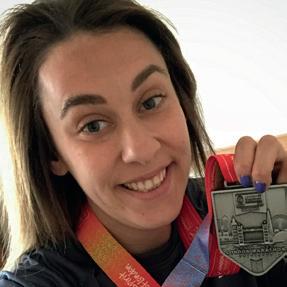
Kate is again enjoying an active social and work life and is planning more marathons and sporting challenges. “Prior to ReActiv8, I had numerous days off work, but I have not had a day off since. Before, I thought I was going to be in pain for the rest of my life,” she adds, recommending it to people experiencing severe back pain. “For me, it is a miracle cure.”
Riley Patient WRITTEN BY Mark Nichollsdevice for lower back pain helps patient live comfortably againINTERVIEW WITH Kate ReActiv8 The therapy is NICE approved and available on the NHS. Any patients or clinicians that would like more information on how to access the therapy, please reach out to ukinfo@mainstaymedical.com WRITTEN BY Sheree Hanna Patients should consult with their physician to discuss whether ReActiv8 is appropriate for them. Individual patient results may vary.